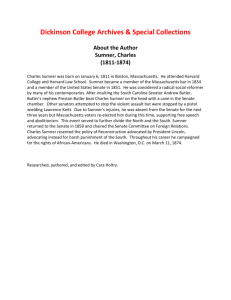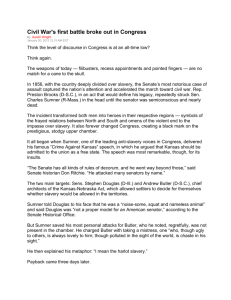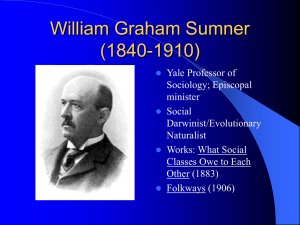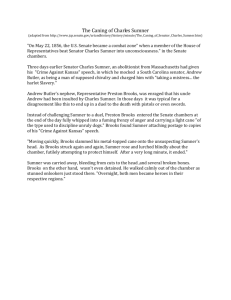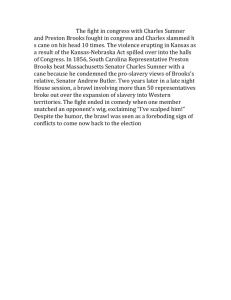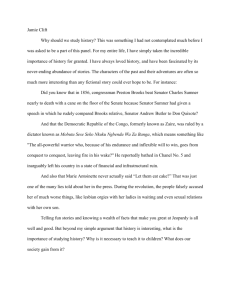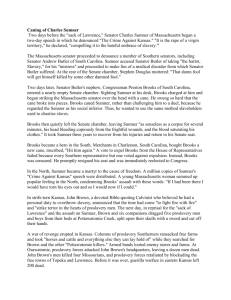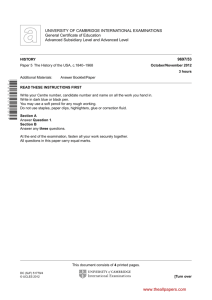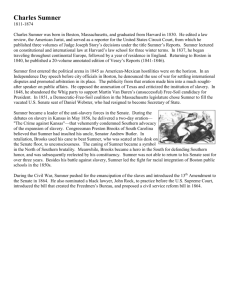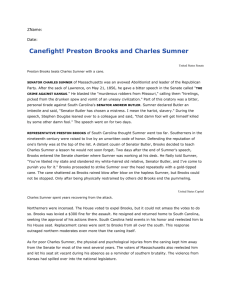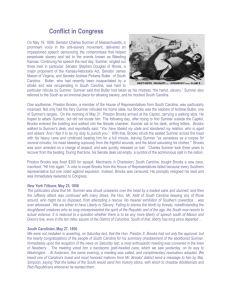Sumner-Brooks Affair
advertisement
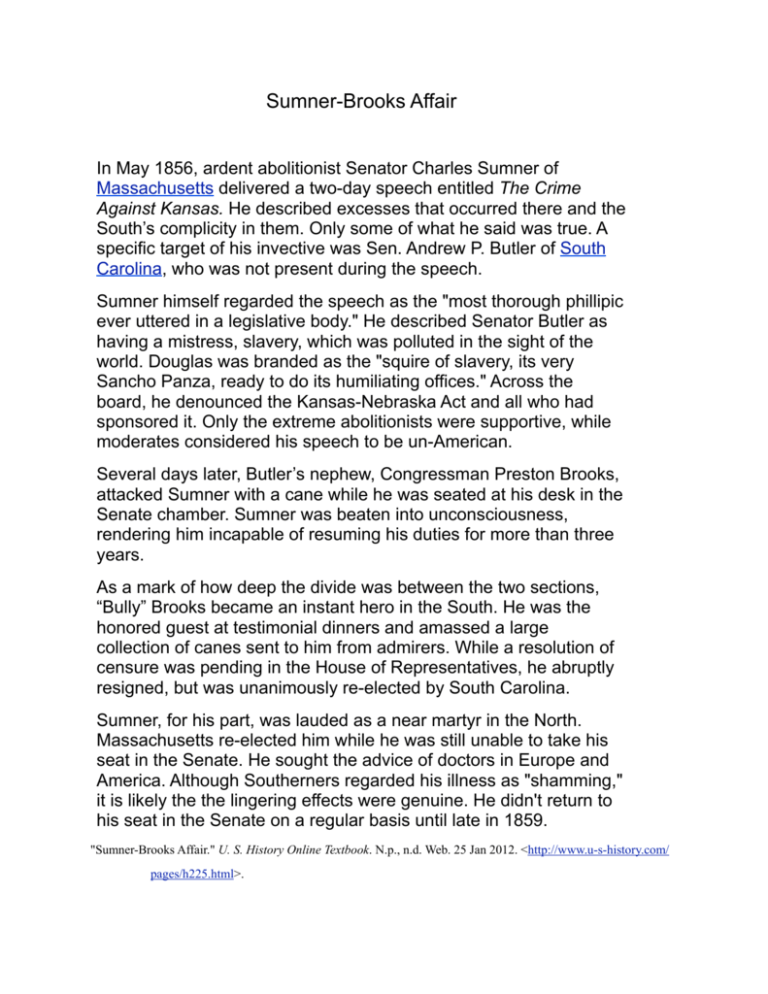
Sumner-Brooks Affair In May 1856, ardent abolitionist Senator Charles Sumner of Massachusetts delivered a two-day speech entitled The Crime Against Kansas. He described excesses that occurred there and the South’s complicity in them. Only some of what he said was true. A specific target of his invective was Sen. Andrew P. Butler of South Carolina, who was not present during the speech. Sumner himself regarded the speech as the "most thorough phillipic ever uttered in a legislative body." He described Senator Butler as having a mistress, slavery, which was polluted in the sight of the world. Douglas was branded as the "squire of slavery, its very Sancho Panza, ready to do its humiliating offices." Across the board, he denounced the Kansas-Nebraska Act and all who had sponsored it. Only the extreme abolitionists were supportive, while moderates considered his speech to be un-American. Several days later, Butler’s nephew, Congressman Preston Brooks, attacked Sumner with a cane while he was seated at his desk in the Senate chamber. Sumner was beaten into unconsciousness, rendering him incapable of resuming his duties for more than three years. As a mark of how deep the divide was between the two sections, “Bully” Brooks became an instant hero in the South. He was the honored guest at testimonial dinners and amassed a large collection of canes sent to him from admirers. While a resolution of censure was pending in the House of Representatives, he abruptly resigned, but was unanimously re-elected by South Carolina. Sumner, for his part, was lauded as a near martyr in the North. Massachusetts re-elected him while he was still unable to take his seat in the Senate. He sought the advice of doctors in Europe and America. Although Southerners regarded his illness as "shamming," it is likely the the lingering effects were genuine. He didn't return to his seat in the Senate on a regular basis until late in 1859. "Sumner-Brooks Affair." U. S. History Online Textbook. N.p., n.d. Web. 25 Jan 2012. <http://www.u-s-history.com/ pages/h225.html>.
